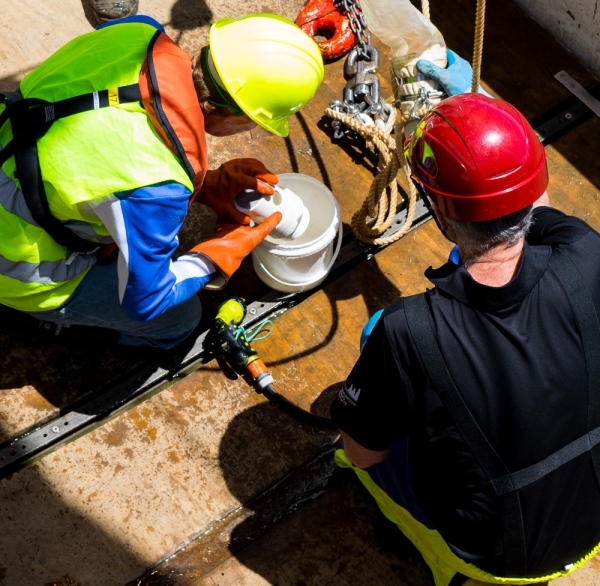04 November 2016
For the last couple of days we have been sampling near L’Esperance Rock. This is the third of the transects planned for the voyage. We have been sampling from the shallow water around the Rock right out to 3000m deep off shore.
As well as sampling the seafloor we have also investigated the top 100m of the water column for plankton. This sampling has been carried out at two depth locations (over 200m and 700m bottom depth) along each of the three transects, at Raoul and Macauley Islands, and L’Esperance Rock. The two depth locations were chosen specifically to target nearshore and oceanic plankton. At each location three replicate samples were taken.
The Kermadec region has a lot of invertebrate fauna living around the islands. Most of these animals have a pelagic larval stage, meaning that the larvae spend some time floating around in the water column before settling back on the seafloor to grow. One of the aims of the plankton sampling is to try and catch some of these pelagic larvae and see just how far they travel before settling. Another objective is to look at the connectivity between the different Kermadec islands, as well as between the Kermadecs and the wider Pacific region.
Most of the plankton identification will take place back on land. Even with the calmest weather it is challenging to spend long periods staring down a microscope on a ship. It is especially difficult when looking at very small animals that are in a liquid, which continually sloshes around with the movement of the ship. From the very preliminary investigations that can be made on board Dr Mary Sewell, from the University of Auckland, has found differences between the samples from all three islands, and differences between the near shore and offshore net drops.
The plankton is sampled by lowering a round net into the water from the side of the ship. It is lowered down to 100m, and then pulled back to the surface. This samples the euphotic zone (where there is light) where most of the larvae live.
Really interestingly, at one sample site the three replicates were completed over the sunset period. The first two net drops were in daylight and the third completed during the darker twilight.
The first two samples were full of white or light coloured copepods, while the third drop returned a sample that was dominated by red copepods. Over a period of about 10-20 minutes the red colouring faded and the sample became white in colour. Mary needs to further investigate these samples in the laboratory to see whether the third sample contains the same species as the first two, or whether the copepods can change colour with how dark the water is.



